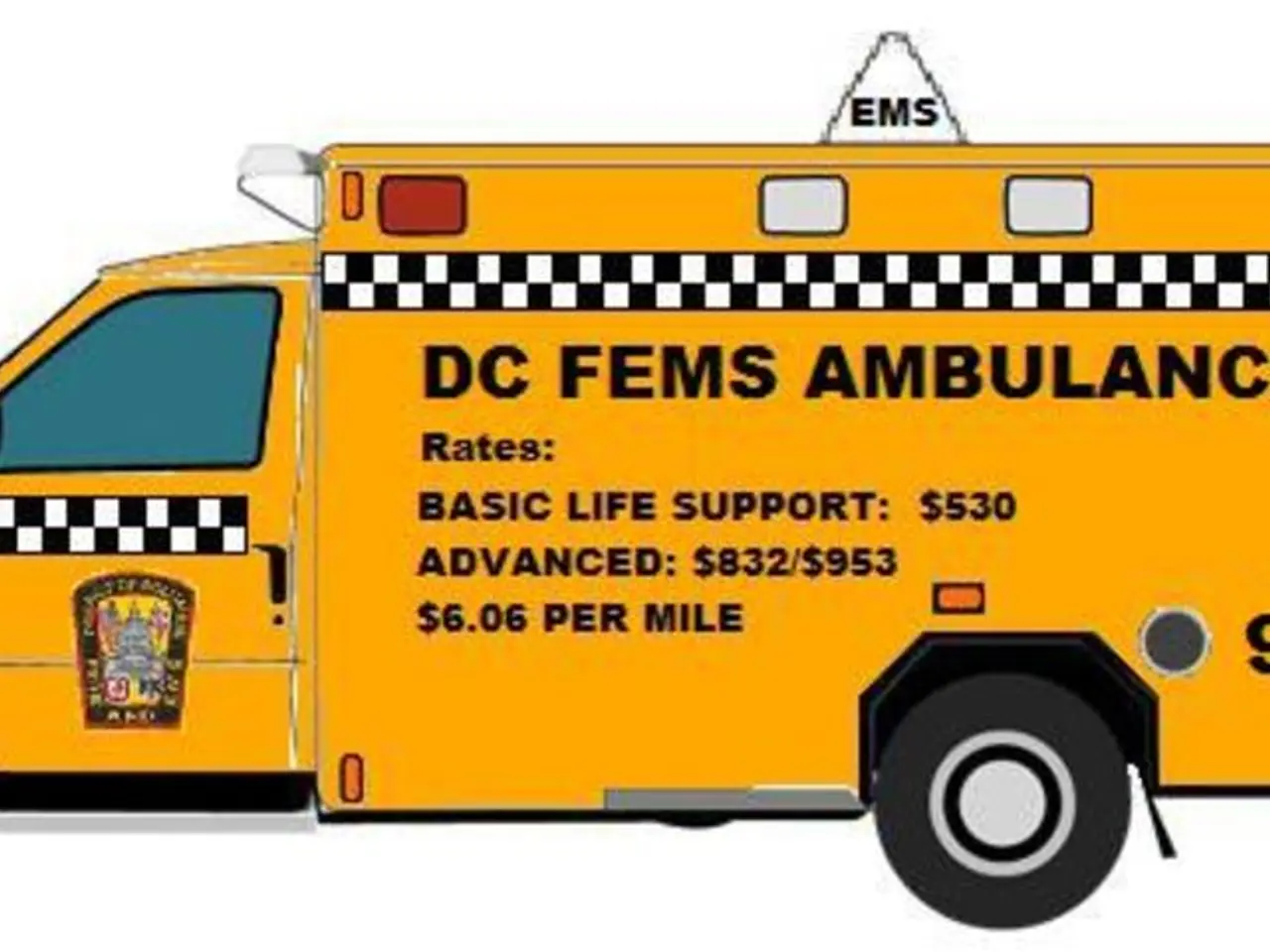Urgent message received for Berlin
In the bustling city of Berlin, the ambulance service has been undergoing significant changes to better cater to the increasing demand for medical assistance.
According to Berlin's Interior Senator, Iris Spranger, the main reason for the surge in emergency calls is the city's changing demographics, with older patients requiring help more frequently. This trend has led to an unprecedented increase in the number of emergency calls, with figures more than doubling over the past 20 years.
To manage this surge, the ambulance service has introduced a triage system for the emergency number 112, categorising patients based on the severity of their illness and the urgency of treatment. This system aims to prioritise patients in critical condition and ensure a swift response.
One of the most notable changes is the establishment of a new telephone number, 19 222, for non-emergency hospital transports. This service, managed by private ambulance companies, is designed for sick people who need a hospital transport but do not require an emergency rescue. Previously, such transports were often delayed due to the shortage of ambulances staffed with paramedics.
To address this issue, it will no longer be prescribed that a paramedic must sit in every ambulance. Instead, future ambulance crews will consist of lower-qualified emergency medical technicians or emergency assistants. This change is reflective of workforce adjustments in emergency medical services across the city.
The ambulance service will still take over patient transports if no private transport vehicles are available. Moreover, ambulance crews will now be released from work in case of deployment and receive full wage compensation.
The state fire chief, Karsten Homrighausen, stated that previously, ambulances were just standing around due to the shortage of paramedics. This change aims to ensure that every ambulance is utilised effectively, reducing waiting times for patients in need.
Despite these changes, the Berlin ambulance service continues to face challenges. The service, which is subordinate to the Berlin Fire Department, has frequently complained of overload in recent years. The average time for an ambulance to reach its destination in Berlin is 8 minutes and 14 seconds, a testament to the hard work and dedication of the service's staff.
Volunteer fire brigade personnel, when involved in emergency medical vehicle deployment, will be treated according to their level of training and authorisation, ensuring they operate within defined roles and competencies in medical emergency response. Voluntary personnel in the voluntary fire brigade's ambulance service will be treated equally.
Private rescue services commissioned for non-life-threatening patient transport are typically involved in Krankentransport (patient transport) rather than emergency rescue. These services, including organisations like Ambulanz Erfurt and entities associated with the Bundesverband eigenständiger Rettungsdienste und Katastrophenschutz (BKS), play a crucial role in managing the increased demand for medical assistance in Berlin.
These changes are a step towards ensuring that Berlin's ambulance service can continue to provide efficient and effective medical assistance to its residents in the face of growing demand.
Read also:
- Money allocated, approximately 1.17 million euros, for local nursing conferences
- Leeds set for a healthier future through new collaborative endeavor
- Eight strategies for promoting restful slumber in individuals with hypertrophic cardiomyopathy
- Exploring the Strength of Minimally Digestible Diets: A Roadmap to Gastrointestinal Healing





